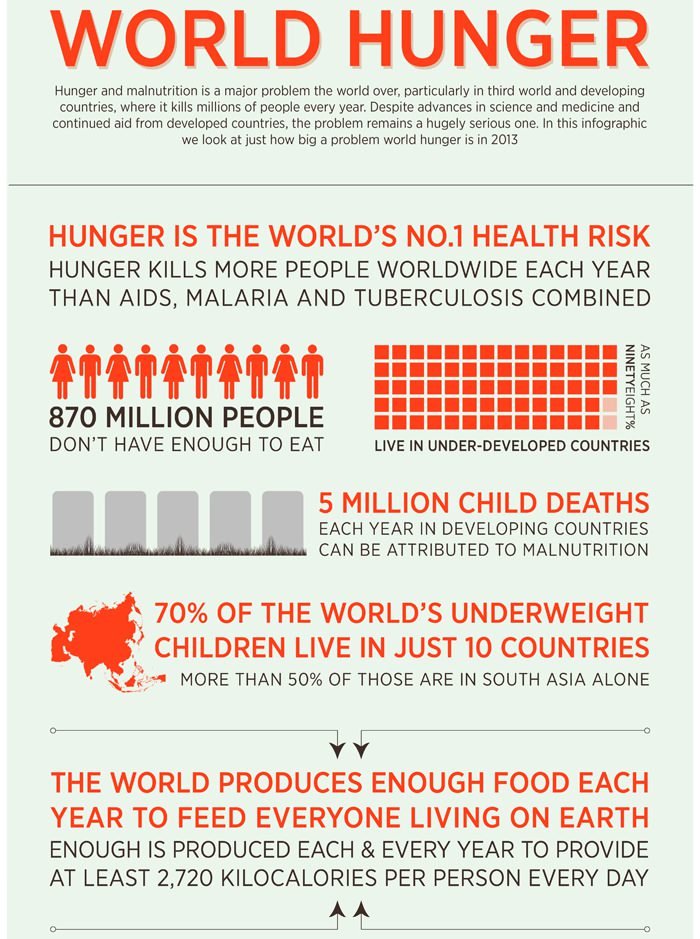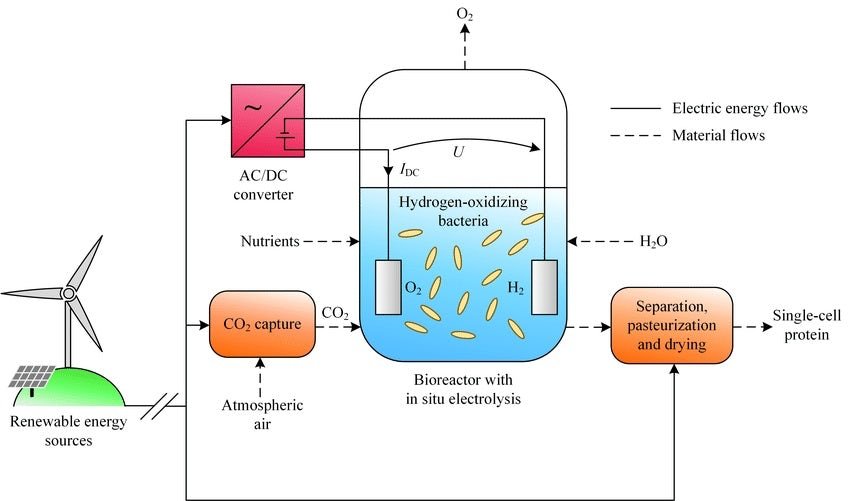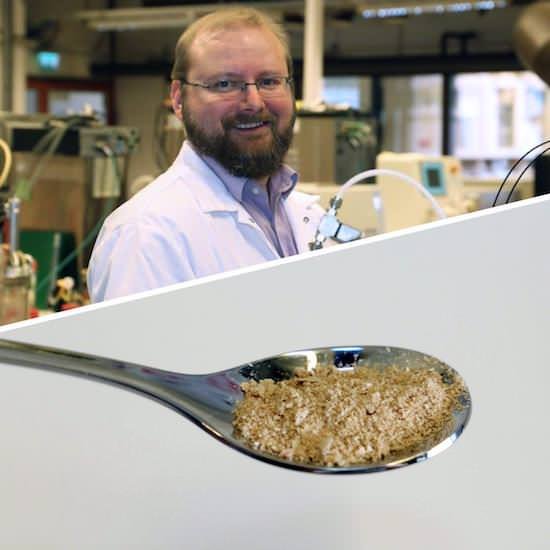
Is there a new solution to help fight world hunger?
A team of Finnish researchers has developed a protein-rich powder that is nutritious enough to serve as food for humans or livestock.
The powder is created from just a handful of ingredients, using renewable energy.
Although it's not quite "real food", it could help fight the hunger crisis in remote areas where people suffer from malnutrition.
The synthetic single-cell protein was developed by the Lappeenranta University of Technology (LUT) and the VTT Technical Research Centre of Finland, during the Food From Electricity project.
This project was set up as a collaboration to help fight world hunger, as well as develop a solution for the growing agriculture problem.

How does it work?
The ingredients needed for this process are electricity, water, carbon dioxide, and microbes.
In a specific bioreactor, an electric current triggers electrolysis of the water which produces hydrogen. The microbes then add oxygen to the created hydrogen, creating a chemical reaction.
The result is then dried out into a fine powder that consists of more than 50 percent protein and 25 percent carbohydrates.
"In the long term, protein created with electricity is meant to be used in cooking and products as it is. The mixture is very nutritious, with more than 50 per cent protein and 25 percent carbohydrates. The rest is fats and nucleic acids. The consistency of the final product can be modified by changing the organisms used in the production."-Juha-Pekka Pitkänen, Principal Scientist at VTT

How far is the development?
The technology has proven to work - but there is still a long way to go.
Currently, a small bioreactor (the size of a coffee cup) would take 2 weeks to produce one gram of said protein powder.
The researchers are now working on scaling up the whole system, to make it 10 times more energy efficient than photosynthesis.
The process is very energy efficient and there are only few resources needed for production.
"Compared to traditional agriculture, the production method currently under development does not require a location with the conditions for agriculture, such as the right temperature, humidity or a certain soil type. This allows us to use a completely automatized process to produce the animal feed required in a shipping container facility built on the farm. The method requires no pest-control substances. Only the required amount of fertilizer-like nutrients is used in the closed process. This allows us to avoid any environmental impacts, such as runoffs into water systems or the formation of powerful greenhouse gases."-Jero Ahola, a Professor at LUT

The only downside is that it might take up to a decade until we can see this technology being used on a commercial scale.
Not only does the technology need to be improved, but you also need to consider legal issues and everything that is needed to allow such a revolutionary new system to be used on a large scale.
“We are currently focusing on developing the technology: reactor concepts, technology, improving efficiency, and controlling the process. Maybe 10 years is a realistic timeframe for reaching commercial capacity, in terms of the necessary legislation and process technology.”-Juha-Pekka Pitkänen, Principal Scientist at VTT

Of course, the major use case for this technology would be to feed starving people.
Either in areas not suitable for food production, or in cases where crops have been destroyed and whole villages are affected by famine.
Although this is not "real food", it is nutritious enough for cooking and could dramatically increase the chance of survival for starving people.
The machine could run consistently, and independently from any environmental factors.
But secondly, it could also be a solution for the growing demand for livestock and the problem to feed them.
As population density increases on earth, the demand for livestock grows as well.
The meat industry is currently accountable for 14-18% of the global greenhouse gas emissions. This project could decrease unsustainable farming and offer a cheaper, renewable method of getting nutritious food for livestock.


© Sirwinchester
